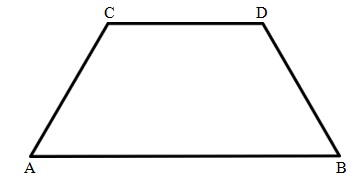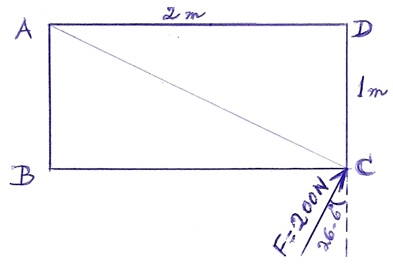Assignment:
PART A
1.) Consider the arm of a balance AB. A mass m hangs at point A on a string of length y. The weight of that mass is W. A second mass m hangs at point B on a string of length (y+h). The weight of that mass is W'. The strings have negligible masses. Illustrate the problem and show that the difference in weights associated with the fact that W' is closer to the earth than W is
W' - W = 8πG ρ m h / 3
where is the mean density of the earth. Consider the earth as a perfect sphere.
2.) A rectangular parallelepiped of sides 20, 15 and 10 cm is made of a material of bulk modulus 6 x 10 6 N/m2. It is immersed in a liquid and subjected to a uniform pressure of 9 x 10 5 N/m2. If each of its sides undergoes exactly the same percentage change, what are its new dimensions?
3.) (a)A hoop has a mass M = 0.2 kg and a radius R = 0.25 m. It rolls without sliding along level ground at 5 m/s. What is its total kinetic energy? The moment of inertia of the hoop about its central axis is given by I = MR2.
(b) It is possible to construct a clock in which the tips of the second hand, the minute hand and the hour hand move with the same tangential speed. Explain clearly why it would not be very practical to build such a clock.
4.)The angular position of a point on a rotating wheel is given by = 2 + 3t + 4t2 + 5t3 where is in radians and t is in seconds.
(a) What is the angular position at t = 0?
(b) What is the angular position in revolutions at t = 2 sec?
(c) What is the instantaneous angular velocity at t = 4.0 sec?
(d) What is the average angular velocity between 2 s and 5 s?
(e) What is the instantaneous angular acceleration at t = 2.0 sec?
(f) What is the average angular acceleration between 1 and 3 sec?
(g) At what instant of time is the instantaneous angular acceleration equal to the average angular acceleration between 1 and 3 sec?
(h) Are the usual formulae such as ω = ω0 + α t etc. applicable here? Justify your answer briefly.
PART B
5.) A spring simple harmonic oscillator of amplitude A has a total energy E.
(a) Find the kinetic energy of the oscillator (in terms of E) when the position is one-third of the amplitude.
(b) Find the potential energy of the oscillator (in terms of E) when the position is one-third of the amplitude.
(c) For what values of the position (in terms of A) does the kinetic energy of the oscillator equal one-half the potential energy?
(d) For what value of the position (in terms of A) does the kinetic energy of the oscillator equal the potential energy?
(e) Are there any values of the position where the kinetic energy is greater than the maximum potential energy of the oscillator? Explain.
6.) A uniform circular turntable of radius 1.9 m and mass M=30 kg rotates counterclockwise in a horizontal plane with an angular speed of 4 rad/s. A lump of clay of mass 2.25 kg and negligible size is dropped onto the turntable from a small distance above it and immediately sticks to it at a distance of 1.8 m from the centre of the turntable.The moment of inertia of the turntablefor rotation about an axis through its centre and perpendicular to it is MR2/2.
(a) What is the new angular velocity of the turntable-clay system?
(b) Is the kinetic energy of the system constant in the process? Explain with numerical results.
7.) [The picture of the trapezoid below is not drawn to scale.]

The moment of inertia of a thin, uniform, flat, isosceles trapezoidal plate of mass m is ma2/4 for rotation about the axis AB, where a is the perpendicular distance between the sides AB and CD. The side AB is of length 6a and the side CD is of length 2a. With A as the origin, the x-axis along AB and the y-axis perpendicular to AB, the centre of mass of the trapezoid is located at co-ordinates (3a, 5a/12). Using the information given, find the moment of inertia of the trapezoid for rotation about CD.
8.)A bed, represented by ABCD, is pushed with a force of 200 N applied at point C at an angle as shown. The bed rotates around point A, in the plane of the paper. What is the torque resulting from the force F? You MUST explain your reasoning clearly to receive full credit for the solution to this problem.
